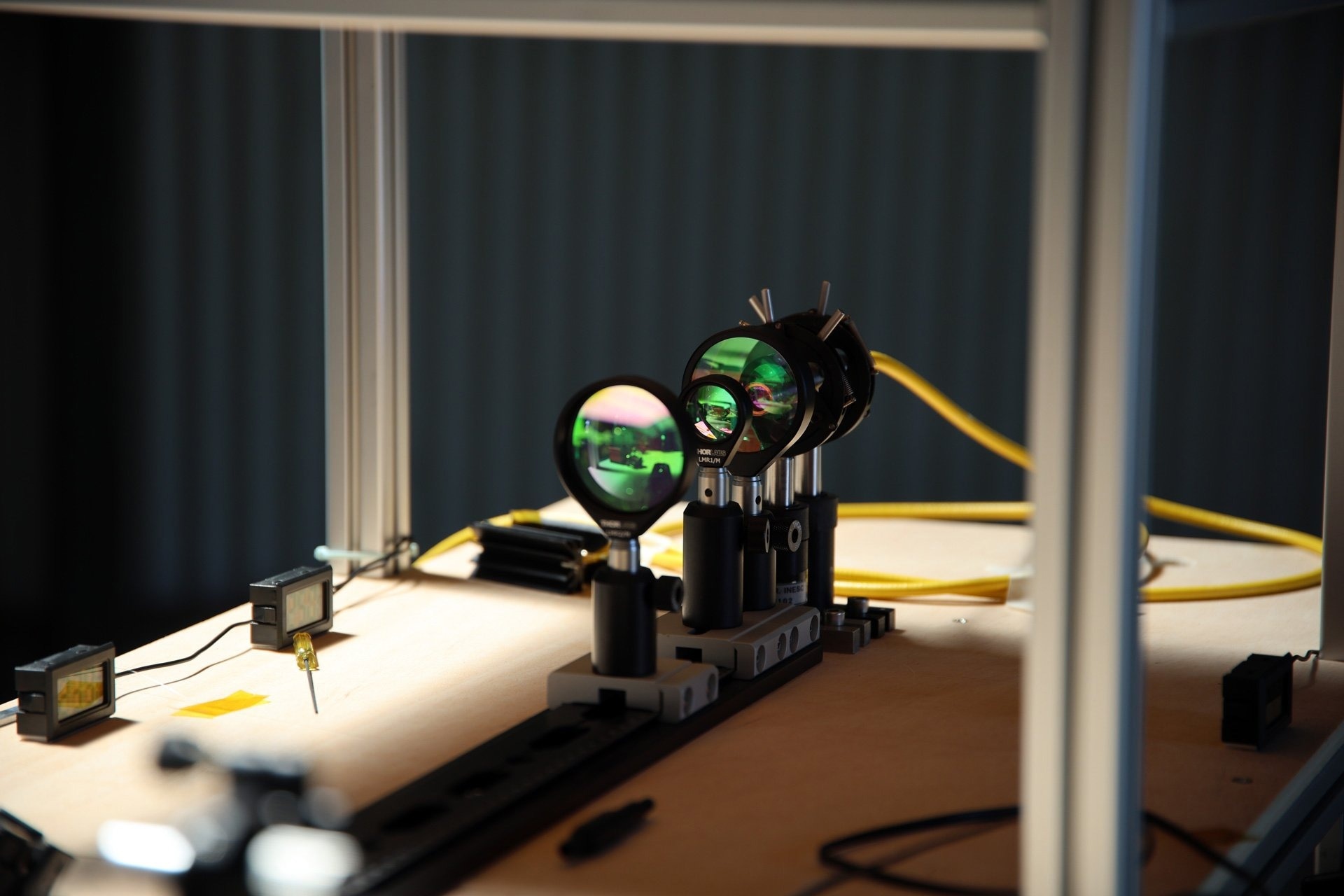Lasers can indeed be used in space. Even though radio waves have long served as the foundation of space communications, the need to transmit more data more quickly has led to the development of lighter, more flexible, and more secure infrared rays—which are invisible to the human eye—as the technology of the future.
 Wiptherm demonstration. Image Credit: INESC TEC
Wiptherm demonstration. Image Credit: INESC TEC
The European project WipTherm, which was tasked with creating novel approaches to wireless energy transmission in the field of microsatellite power for space exploration, has come to an end. Additionally, one of the project’s five partners, the Institute for Systems and Computer Engineering, Technology and Science (INESC TEC), concentrated on creating a high-power optic fiber laser.
The organizations in charge of project coordination were the Faculty of Science, University of Porto (FCUP), and the Institute of Physics for Advanced Materials, Nanotechnology and Photonics (IFIMUP).
The researchers’ solution was displayed at an air base on the west coast of the Portuguese city of Aveiro. Researcher Orlando Frazão of INESC TEC Centre for Applied Photonics (CAP) gave the project’s outcomes “a very positive assessment.”
We were able to increase our knowledge of high-power lasers and develop new optic fiber lasers with several potential applications.
Orlando Frazão, Researcher, INESC TEC Centre for Applied Photonics
In space exploration, lasers such as the one created by the Portuguese R&D Institute are especially crucial. In situations such as space communications, fiber optic communication—which uses light instead of electric current to deliver the signal—is a viable choice.
Frazão added, “Our role in the consortium focused on developing a high-power laser entirely in optical fiber, operating in a 1550-nanometre range, with a maximum power of 40 Watts. In addition, we designed a telescope capable of simultaneously lighting 27 thermoelectric sensors using an array of lenses.”
In the last WipTherm experiment at São Jacinto airfield, the researchers were able to supply the thermoelectric sensors with power outputs of 20 Watts.
“Future developments may include converting these lasers into pulsed lasers to obtain powers close to kW,” Frazão noted.
He further stated, “The main goal was to develop continuous emission lasers to obtain sufficient power and create a temperature gradient in the thermoelectric system. The use of lasers in space is a reality; however, lasers require increased care since they are instruments that can be used for military purposes. We are trying to understand which types of lasers and which features can be used for academic purposes or as commercial solutions.”
Lasers to Power Satellites
“Power” is one of the project’s keywords, supervised by the University of Porto. WipTherm’s primary purpose was to develop a unique wireless energy transfer system for recharging the energy storage components utilized in CubeSat technologies (such as micro and nano satellites).
As CubeSat technologies progress, energy consumption in this market sector has grown, necessitating larger solar panels, more efficient energy storage systems, and other energy transfer and collecting systems.
During the demonstration, the team utilized a high-power laser to refuel a CubeSat. This extremely small satellite, equipped with IFIMUP-developed thermoelectric sensors, was able to absorb light at 1500 nanometers, boosting charging efficiency.
Orlando Frazão asserts that “it is still early” to determine how the work produced for the initiative could affect the industry going forward. However, ] using WipTherm to learn permits researchers to concentrate on a brand-new European initiative called “Transition.”
Frazão concluded, “In this new project, we have already included a business model for the idea of recharging using lasers.”